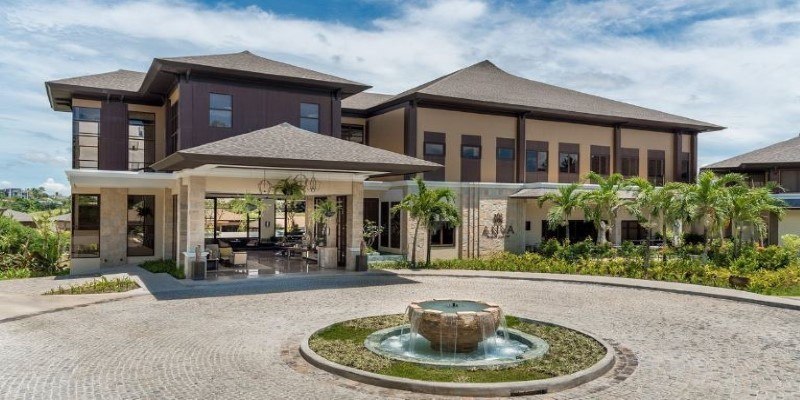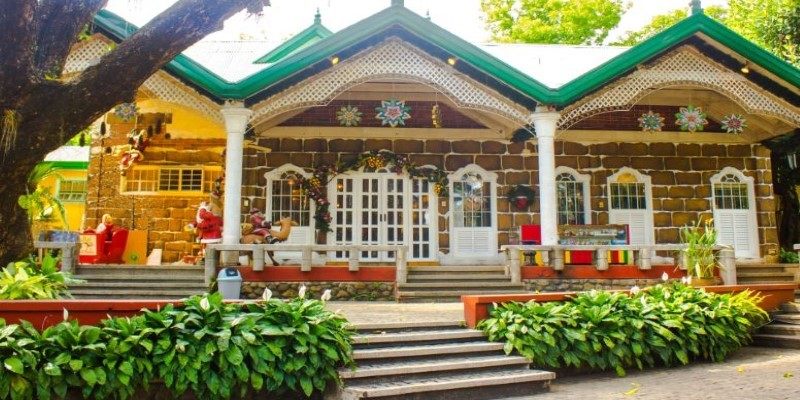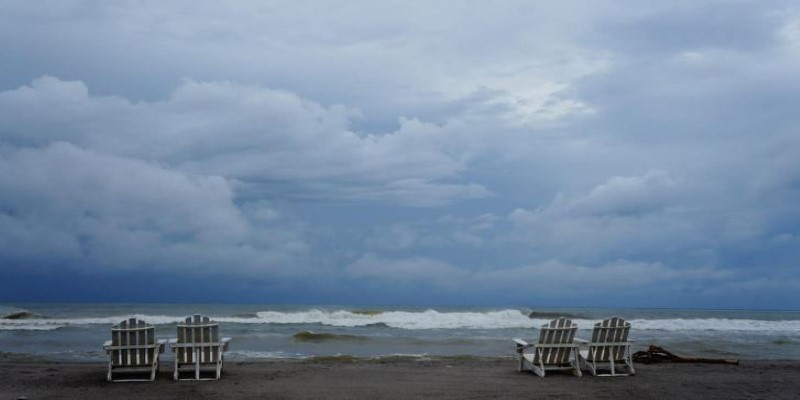Rainy Season Escape: Our Trip to Crystal Beach Resort and Anawangin Cove
Zambales is a popular destination for beach lovers, typically visited in summer. Still, we decided to take a chance and explore Crystal Beach Resort and Anawangin Cove during the rainy season. Despite the unpredictable weather, our trip turned out to be surprisingly rewarding. Traveling off-season offered fewer crowds, lower prices, and a peaceful atmosphere.
Instead of the usual sunny beaches, we experienced a moody, mist-covered landscape with a serene coastline almost to ourselves. This article takes you through our itinerary and budget, showing how the rainy season gave us an unforgettable beach experience and proof that the off-season can sometimes be the best time to go.
The Journey to Crystal Beach Resort
Getting to Crystal Beach Resort was relatively easy. We rode a bus from Manila to San Narciso, Zambales, for about PHP 350 per head. From the terminal, we rode a tricycle, which brought us directly to the resort's entrance. The ride was fast, and despite the rainy sky, the thrill of reaching our beachfront accommodation made the wet roads unimportant.
When we arrived, we could tell immediately how tranquil everything was. The resort, which is known for its waves that are surfer-friendly and relaxed vibe, had fewer tourists than normal. The staff received us warmly and showed us to our room, a nipa-style room that had a straightforward view of the beach. We paid PHP 3,000 per night for a standard room, which held two people snugly. If it were during peak season, the rate would have been higher, and we would have had to fight for space.
Because the waves were choppy for the time of year, surfing wasn't completely out, but we opted to play it safe. We strolled along the beach instead, observing the storm clouds roll in and out and the ocean change hues of dark blue and gray. It wasn't the typical sunny, vibrant beach day, but it was its own thing—serene, unbridled, and untamed.
That evening, we had dinner at the resort’s restaurant, ordering grilled seafood and steaming bowls of bulalo. The sound of the rain hitting the thatched roof while we ate made for a cozy and memorable experience.
Anawangin Cove: Rain, Sand, and Serenity
The next day, we set off for Anawangin Cove, a secluded beach known for its unique pine trees and volcanic ash-colored sand. Because of the weather, boat rentals were slightly cheaper than usual. We secured a round-trip ride for PHP 1,200, which would have cost more during peak season. The ride was rough, with waves crashing against the small boat, but our boatman expertly navigated the waters.
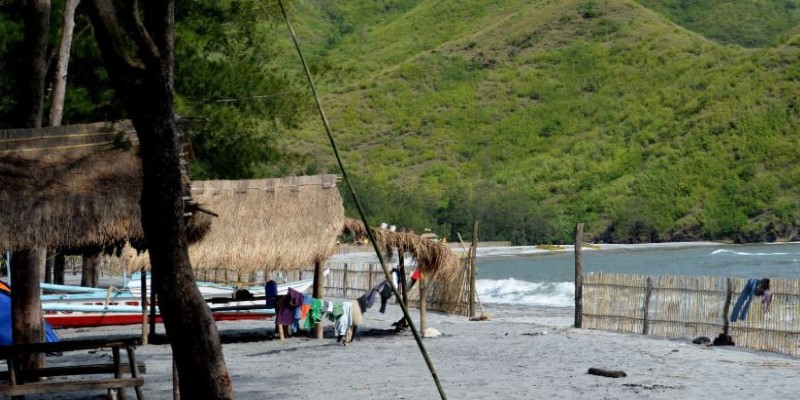
Stepping onto Anawangin Cove felt like arriving in a completely different world. The cloudy sky cast a mystical feel over the landscape, and the lack of other tourists made it feel almost deserted. The trees swayed in the breeze, and the cool air mixed with the scent of the sea.
We spent the day hiking up a small hill that offered a panoramic view of the cove. The climb was muddy and slippery due to the rain, but once we reached the top, the sight was worth every step. Below us stretched a peaceful shoreline, curving gently against the mountains, with waves rolling in softly. Unlike the usual images of Anawangin Cove in the summer—crowded and sunny—we had a different, more intimate experience.
Lunch was simple yet satisfying. We brought pre-packed meals to avoid the extra cost of buying food on the island, spending only PHP 200 per person on rice, grilled fish, and fruit. We sat by the shore, eating while the drizzle came and went.
Due to the strong currents, swimming was off the table, but walking along the sand, watching the stormy waves, and simply enjoying the quiet was enough. By mid-afternoon, we decided to head back before the weather turned rough. The return trip was smoother, and by the time we reached the mainland, the rain had stopped.
Breaking Down the Budget
One of the biggest perks of traveling during the rainy season was the cost savings. With fewer tourists around, everything from accommodations to boat rentals became more affordable, making the trip both enjoyable and budget-friendly. We didn’t have to pay premium prices for food or entrance fees either, which made the experience even better. Here's a detailed breakdown of our expenses per person:
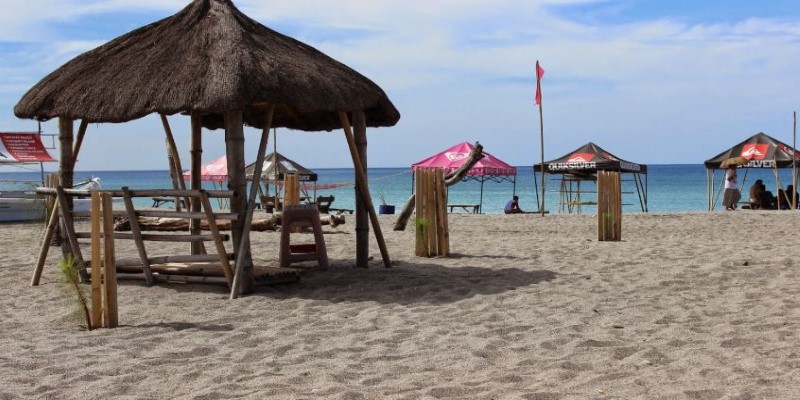
- Bus fare (Manila to San Narciso, round trip): PHP 700
- Tricycle ride (to and from Crystal Beach Resort): PHP 100
- Accommodation (split between two people, one night): PHP 1,500
- Food (resort restaurant and pre-packed meals): PHP 500
- Boat rental to Anawangin Cove (shared): PHP 600
- Miscellaneous (snacks, drinks, small fees): PHP 200
Total per person: PHP 3,600
Had we chosen to visit during the peak season, the overall cost could have easily exceeded PHP 5,000. This would be due to higher accommodation rates, increased boat rental fees, and the added costs of activities and meals during the busy months. The rainy season, therefore, not only provided a quieter, more peaceful trip but also made it much more affordable, allowing us to enjoy a fulfilling vacation without breaking the bank. It’s a clear reminder that off-season travel often comes with its own set of advantages beyond just lower prices.
Conclusion
Visiting Crystal Beach Resort and Anawangin Cove during the rainy season was a refreshing change. The serene, uncrowded beaches and dramatic weather made for a unique experience, far removed from the usual summer crowds. While some activities were limited, the peaceful atmosphere and stunning views made up for it. If you’re looking for a more intimate beach escape with fewer tourists and lower costs, the rainy season in Zambales is definitely worth considering.

